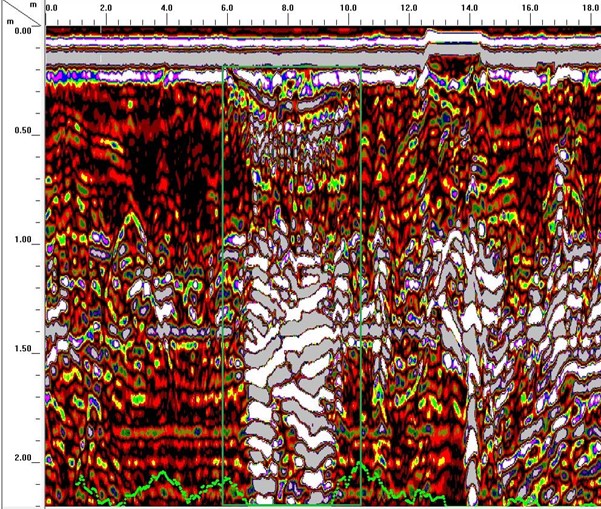Investigating the Subtleties: The Effect of GPR Surveys on Land Use Planning

Ground Penetrating Radar, or Ground Penetrating Radar, is an innovative technology that transforms the way we understand what is beneath our ground. As GPR Survey Worcester evolve and construction projects become increasingly complex, the demand for precise subsurface information has reached new heights. GPR surveys offer a non-destructive means of revealing hidden structures, utilities, and archaeological artifacts, establishing them a vital tool for land planning, engineering, and environmental investigations.
In this article, we will examine the importance of GPR inspections in modern industry, highlighting their various benefits and applications. We will delve into the technology behind GPR, contrasting it to traditional survey methods, and analyze how it improves efficiency and precision in construction. If you are a landowner, engineer, or contractor, grasping how GPR can assist your projects is crucial for managing the challenges of the current development landscape. Come with us as we uncover the depths of this powerful technology and its impact on land development. spintax ### Comprehending GPR Surveys along with Its Importance
GPR investigations represent a non-invasive geophysical method used to investigate subsurface formations. This advanced technology uses high-frequency radio waves that infiltrate the ground and reflect off various underground materials, enabling the detection of anomalies, alterations in material properties, and voids. GPR is recognized for its capability to provide comprehensive, instantaneous information about the underground, making it an essential tool in many fields, such as construction, anthropology, and environmental studies.
The significance of GPR techniques lies in its ability to enhance security and productivity in various projects. By locating hidden utilities, like pipes and cables, GPR surveys help reduce risks associated with accidental strikes in the course of excavation. This proactive approach not only ensures the safety of workers but also reduces the likelihood of costly delays and destruction. Additionally, GPR surveys can reveal essential data about soil composition and geological conditions, aiding well-informed decision-making in site development and planning.
As the demand for eco-friendly and efficient land development expands, GPR technology is constantly develop. Its significance extends beyond building, playing a significant role in structural inspections, environmental assessments, and ground investigations. By utilizing GPR, engineers and developers can improve plans, ensure compliance with regulations, and boost overall project outcomes, marking a key shift towards increasingly thoughtful and sustainable land management practices.
Benefits and Applications of GPR in Development
GPR offers numerous benefits that significantly enhance the effectiveness and effectiveness of development initiatives. One of the key advantages of GPR is its capability to provide real-time, non-invasive imaging of subsurface conditions. This capability allows professionals to identify underground utilities, geological features, and possible hazards before construction begins. By doing so, GPR lessens the risks associated with surprises during excavation, reducing project holdups and unexpected costs associated with injury or redesign.
In addition to identifying utilities and hazards, GPR plays a crucial role in evaluating soil composition and the integrity of structures. https://zenwriting.net/landsurveysworcestershire646/discovering-mysteries-a-strength-of-gpr-surveys is crucial for geologists as it affects decisions regarding foundation design, material selection, and overall suitability of the site. Furthermore, GPR scans can reveal structural issues in existing buildings, which helps property owners and developers address concerns before they worsen, thus ensuring security and adherence with rules. The comprehensive data provided by GPR facilitates informed decision-making throughout the development lifecycle.
The uses of GPR in development span multiple industries, including construction, environmental monitoring, and archaeological research. Beyond traditional construction projects, GPR is increasingly utilized in infrastructure inspections and environmental assessments, where understanding subsurface conditions is essential. Its versatility extends to archaeological locations, where it aids in discovering buried artifacts without harming the ground. As the technology continues to evolve, its adoption in land development is likely to expand, providing novel solutions for complex challenges faced by developers and builders.
Comparison Analysis: GPR vs. Traditional Techniques
GPR assessments offer several benefits over conventional investigative methods like excavation magnetic assessment, or resistivity scanning. One of the key pros of GPR is its non-intrusive characteristics, allowing for real-time subsurface imaging bypassing excavation. This does not only protect site integrity but additionally minimizes the risk of damaging current utilities or structures, which is often a critical worry when using invasive methods.
In terms of effectiveness, GPR methods typically deliver more rapid results than traditional methods. While conventional investigations often demand extensive site preparation and manual labor, GPR quickly gathers data over extensive areas, creating high-resolution images of underground features in a fraction of the time. This speed translates into cost savings, as projects can advance swiftly without the delays to hands-on digging or investigative boring.
Despite this, it is important to recognize that this technology does have drawbacks compared to conventional techniques. For case, the effectiveness of GPR can be impacted by soil composition and moisture content, potentially hinder the finding of certain materials. In contrast, conventional methods might be better suited in certain situations where soil conditions present challenges for GPR effectiveness. Therefore, the decision between Ground Penetrating Radar and conventional techniques should consider the unique requirements of individual projects, weighing both pros and limitations to identify the best approach for investigating subsurface areas.

